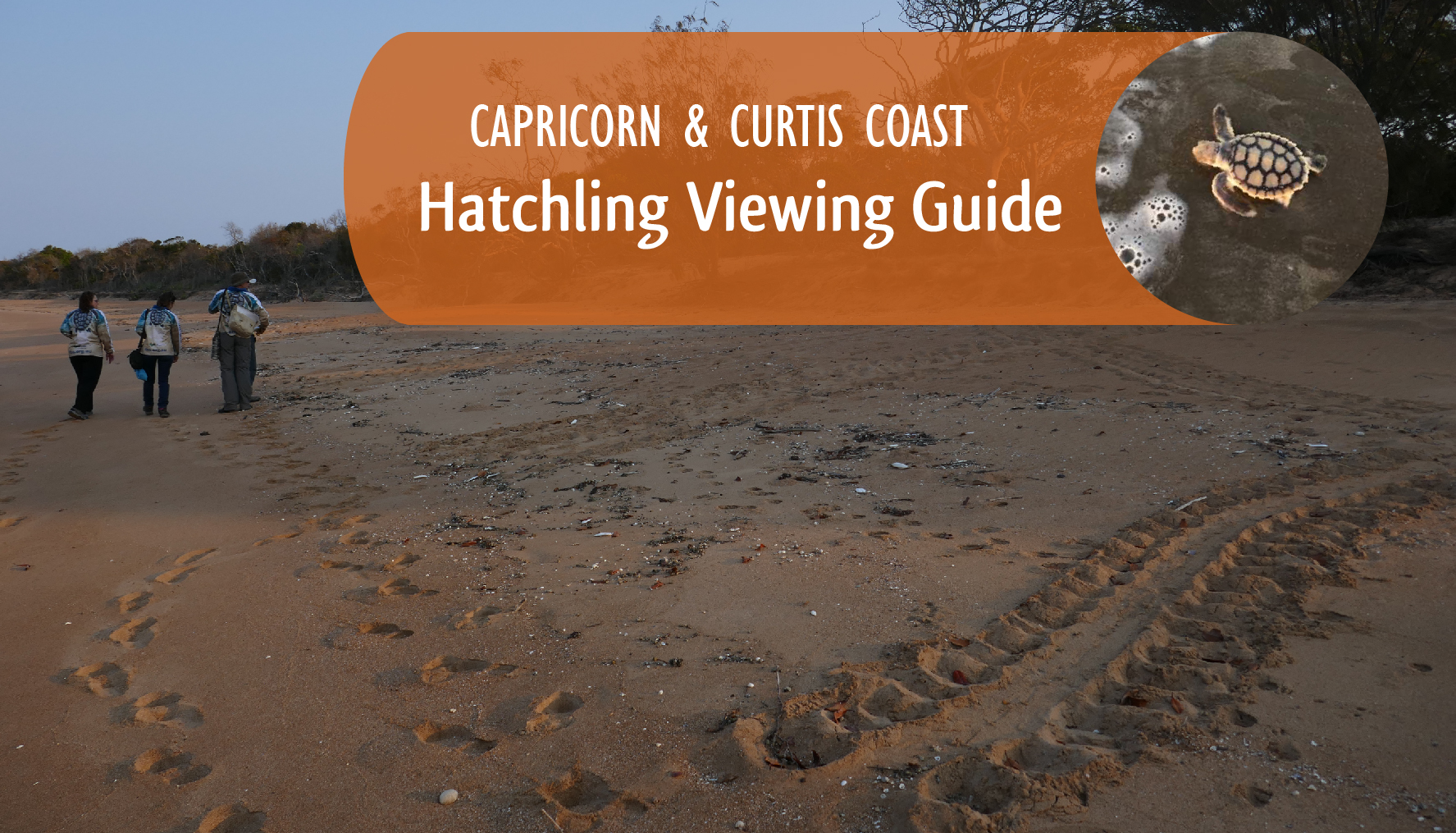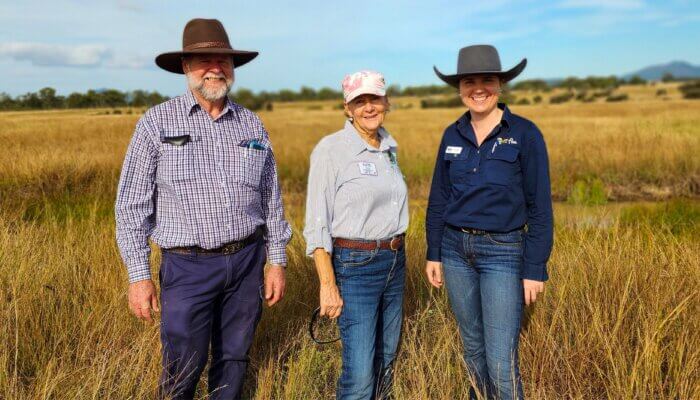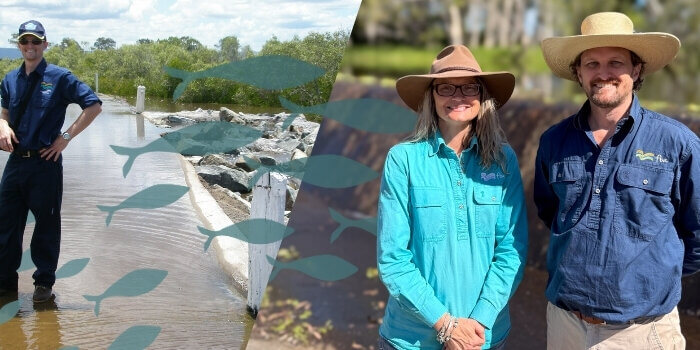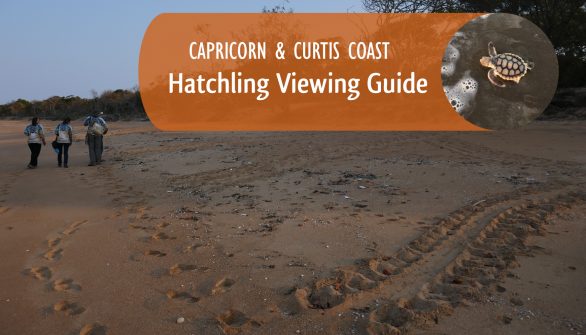
Capricorn & Curtis Coast Hatchling Viewing Guide
Posted on January 14th, 2020
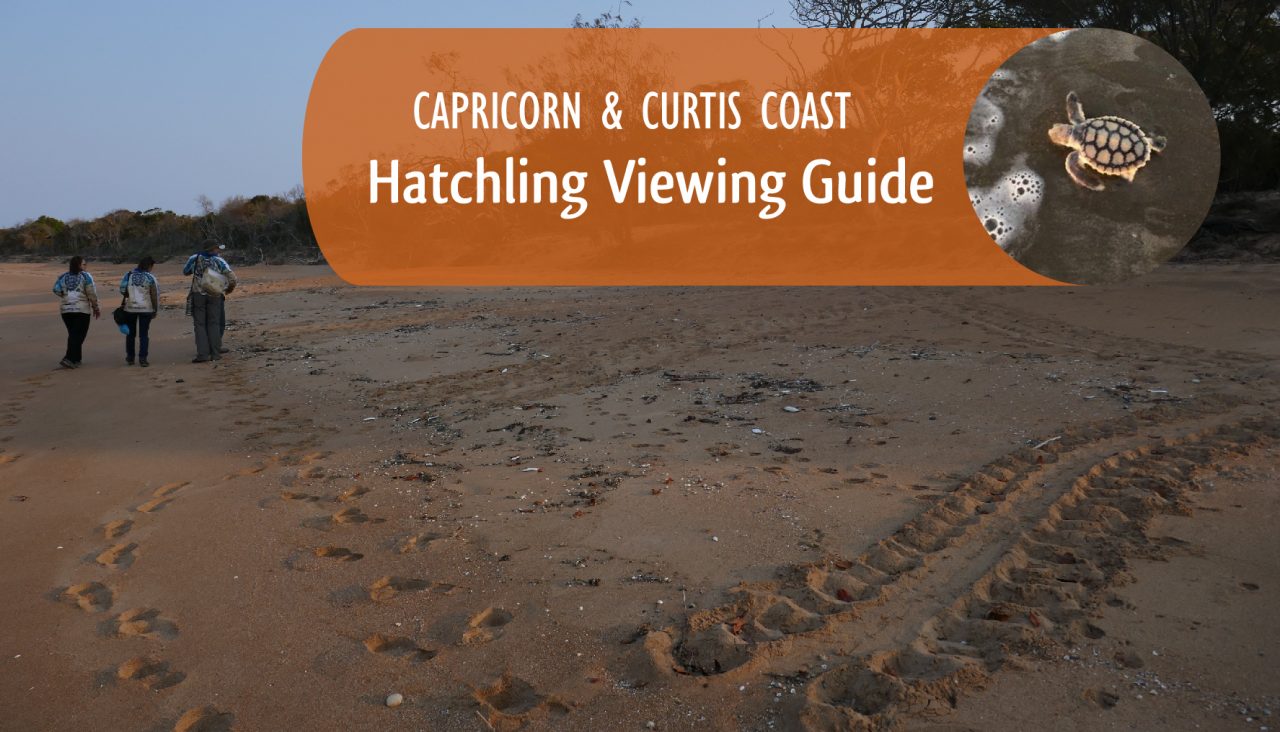
From December to March each year, central Queensland beaches erupt with the next generation of marine turtles, and a cohort of people eager to catch a glimpse of this amazing natural spectacle. Humans and human interference can have a negative impact on hatchling survival rates. To give our adorable, newly hatched turtles (and nesting mum’s) the best chance at survival, here’s our guide for sea turtle seekers.
Due to deadly threats impacting every stage of a sea turtle’s life, six of the world’s seven species of marine turtles are endangered. It is estimated that only 1 in 1,000 hatchlings will survive to adulthood. The marine waters of central Queensland provide important foraging grounds while the Capricorn and Curtis coast offer rookeries to local species. Our region is lucky enough to have a highly active volunteer group of trained marine turtle helpers – established by FBA called Team Turtle CQ (TTCQ). This project is funded by the partnership between the Australian Government’s Reef Trust and the Great Barrier Reef Foundation.
Despite the heat and festivities, TTCQ volunteers have been walking beaches as far north as Stanage Bay and as south as Wild Cattle Island at crazy hours of the day and even on Boxing day! Since September of last year, TTCQ volunteers have recorded 65 turtle tracks, 56 nests and over 116 hatchlings. With a month and a half left until the turtle hatchling season slows down, there are still many more CQ hatchlings to come.
Our Environment Leader, Shannon van Nunen says this is how you can help our hatchlings!
- Keep clear of their nest
If people are too close, they can push sand into the nest making it harder for the hatchlings to climb out. “These tiny creatures cannot afford to waste any energy and this extra work might be the difference between life and death,” Shannon explains.
Additionally, this first journey is important as hatchlings take an imprint of that beach so they can return to the same general area when they are ready to mate and lay their own eggs. - Leave the torch at home
“Hatchlings usually emerge of an evening as the temperature is low and there’s less chance of being caught by predators. While it may seem counterproductive to not pack a torch, marine turtles will thank you. Light pollution is a major threat to marine turtles as it disorientates them, making them move in the wrong direction. Guided by the natural light of the horizon hatchlings make their way to the ocean. Torches, lamps and flash photography can easily disorientate hatchlings (even once they have reached the ocean) so please don’t use them,” he added.
- No place for pets
“Hatchlings have enough predators to dodge without adding domestic animals to the mix. If you are walking the beach in hope of sighing hatchlings, please keep your pets at home. Additionally, keep your dog on a lead when walking the beaches during nesting and hatchling season,” Shannon suggests.
- Save a life by picking up marine debris
Hatchlings may never find their way from egg to ocean if they become disorientated or entangled in land-based rubbish. “If you find rubbish while you are on the beach, you can make a world of difference to a hatchling by disposing of it properly. You can also make sure that none of your waste makes it way to the ocean by reducing the amount of plastic you consume, avoiding microplastics and recycling,” he said.
- Don’t handle hatchlings
“While cute, hatchlings are not toys, and should not be picked up or interfered with. To get safely to the ocean hatchlings must respond to many environmental cues which can be missed or misread when handled by humans,” Shannon explains.
Marine Turtles are listed under the Environmental Protection Biodiversity Conservation Act and as such are protected species. It is illegal to interfere with marine turtles, their nests, eggs, or hatchlings without the appropriate authority. - Move slow and stay low
To avoid disturbing turtles, walk slowly along the beach. Watch your step around hatchlings. Avoid sudden movements. Also, keep out of sight of nesting turtles. Sit, crouch, or lie in the sand and keep your distance.





